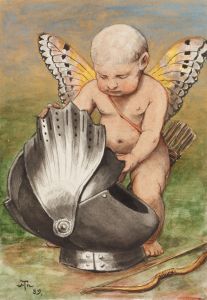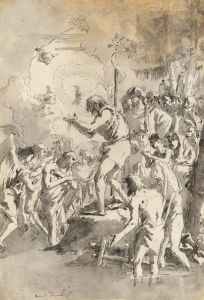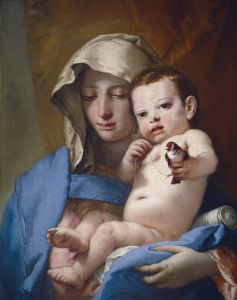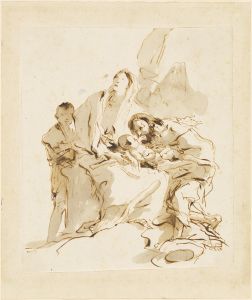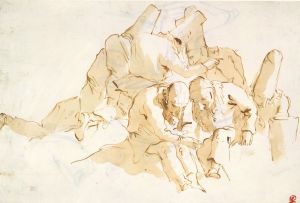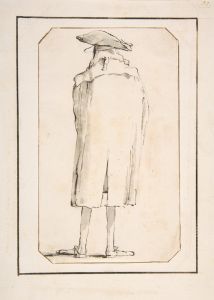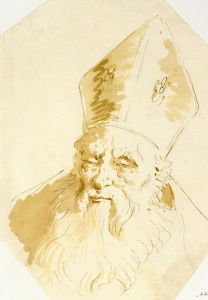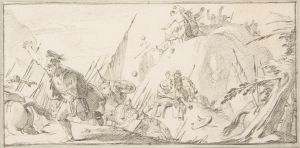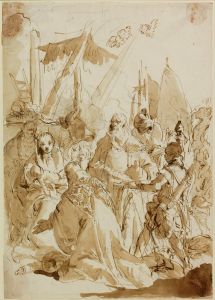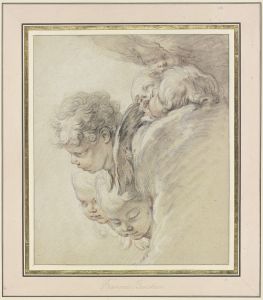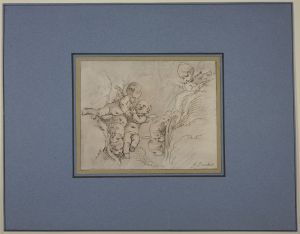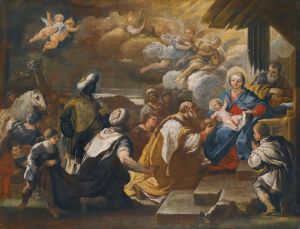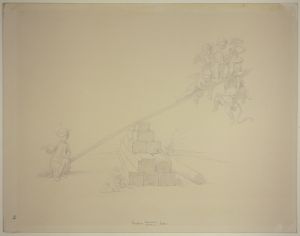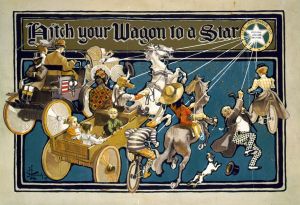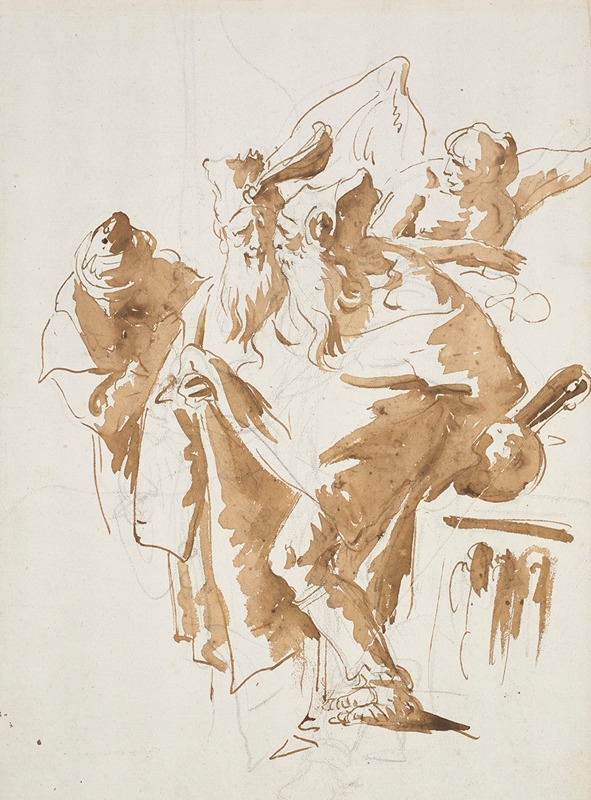
An angel addressing the three Magi
A hand-painted replica of Giovanni Battista Tiepolo’s masterpiece An angel addressing the three Magi, meticulously crafted by professional artists to capture the true essence of the original. Each piece is created with museum-quality canvas and rare mineral pigments, carefully painted by experienced artists with delicate brushstrokes and rich, layered colors to perfectly recreate the texture of the original artwork. Unlike machine-printed reproductions, this hand-painted version brings the painting to life, infused with the artist’s emotions and skill in every stroke. Whether for personal collection or home decoration, it instantly elevates the artistic atmosphere of any space.
Giovanni Battista Tiepolo was an Italian painter and printmaker, renowned for his grandiose and dynamic compositions, often featuring religious and mythological subjects. One of his notable works is "An Angel Addressing the Three Magi," a painting that exemplifies his mastery in handling complex narratives with a sense of drama and movement.
Tiepolo was born in Venice in 1696 and became one of the most prominent painters of the 18th century. His work is characterized by its luminous color palette, fluid brushwork, and the ability to convey a sense of grandeur and theatricality. Tiepolo's style is often associated with the Rococo movement, which emphasized ornate detail and lightness.
"An Angel Addressing the Three Magi" is a testament to Tiepolo's skill in creating dynamic compositions that capture the viewer's attention. The painting depicts a biblical scene involving the Three Magi, also known as the Wise Men or Kings, who are significant figures in the Christian tradition. According to the Gospel of Matthew, the Magi traveled from the East to pay homage to the newborn Jesus, guided by a star. In Tiepolo's depiction, an angel appears to the Magi, delivering a divine message.
The composition is marked by Tiepolo's use of light and shadow to create depth and focus within the scene. The angel, often portrayed with ethereal grace, is depicted in a manner that suggests both movement and divine presence. The figures of the Magi are rendered with attention to detail, each character exhibiting distinct expressions and gestures that convey their reverence and awe.
Tiepolo's ability to capture the essence of the biblical narrative while infusing it with his unique artistic flair is evident in this work. The painting reflects his understanding of human emotion and his capacity to translate complex theological themes into visual form. The use of color is particularly noteworthy, with Tiepolo employing a palette that enhances the spiritual and otherworldly atmosphere of the scene.
Throughout his career, Tiepolo received numerous commissions from religious institutions and aristocratic patrons, which allowed him to produce a vast body of work that includes frescoes, altarpieces, and easel paintings. His influence extended beyond Italy, as he was invited to work in Germany and Spain, where he continued to create monumental works that solidified his reputation as a leading artist of his time.
"An Angel Addressing the Three Magi" is a fine example of Tiepolo's ability to blend narrative content with artistic innovation. It stands as a representation of his contribution to the art world, showcasing his talent for storytelling through the medium of paint. The painting remains a significant piece within the context of 18th-century art, reflecting both the religious fervor of the period and the artistic trends that defined the Rococo movement.
In summary, Giovanni Battista Tiepolo's "An Angel Addressing the Three Magi" is a work that encapsulates the artist's skill in creating visually compelling and thematically rich compositions. Through his use of color, light, and dynamic figures, Tiepolo brings to life a moment of divine interaction, capturing the imagination of viewers and securing his legacy as a master of his craft.





